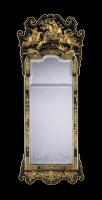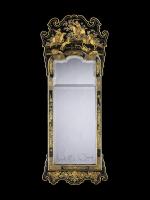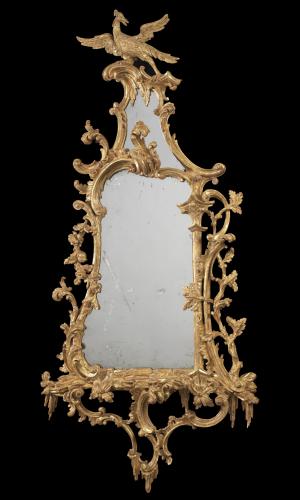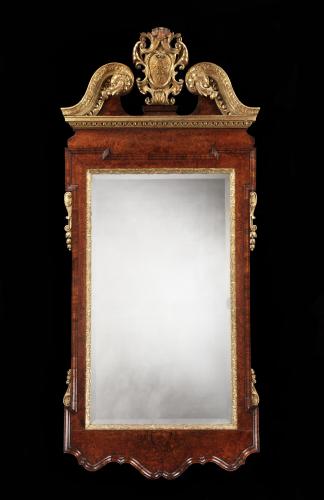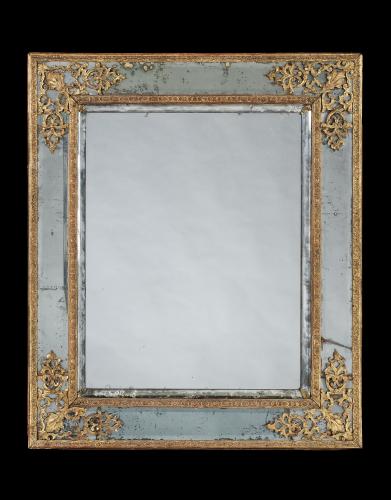
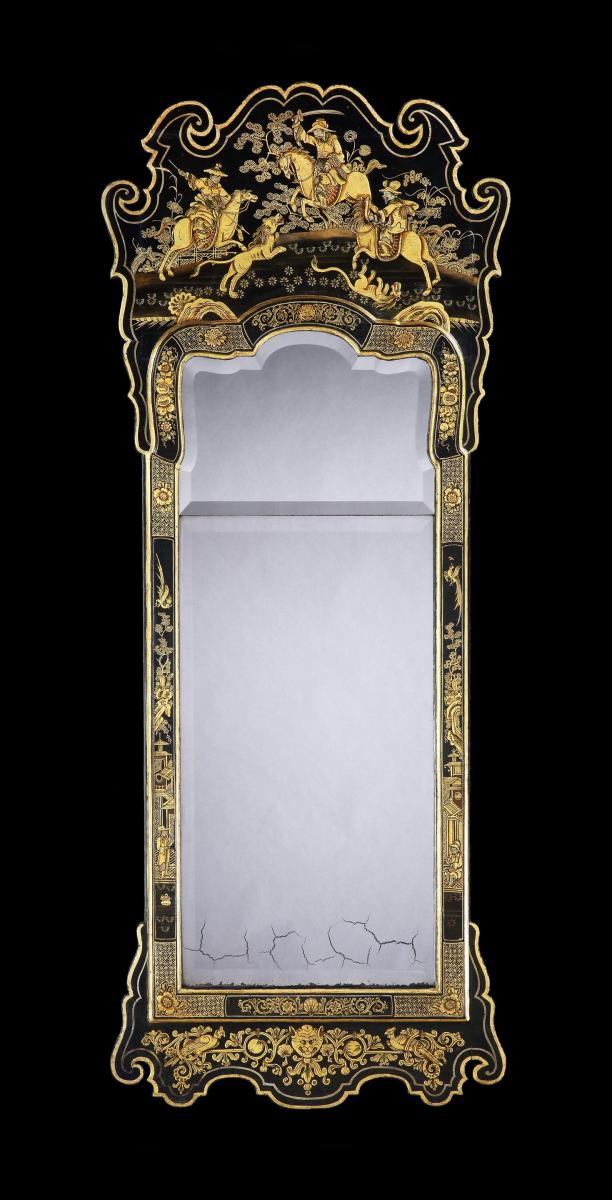
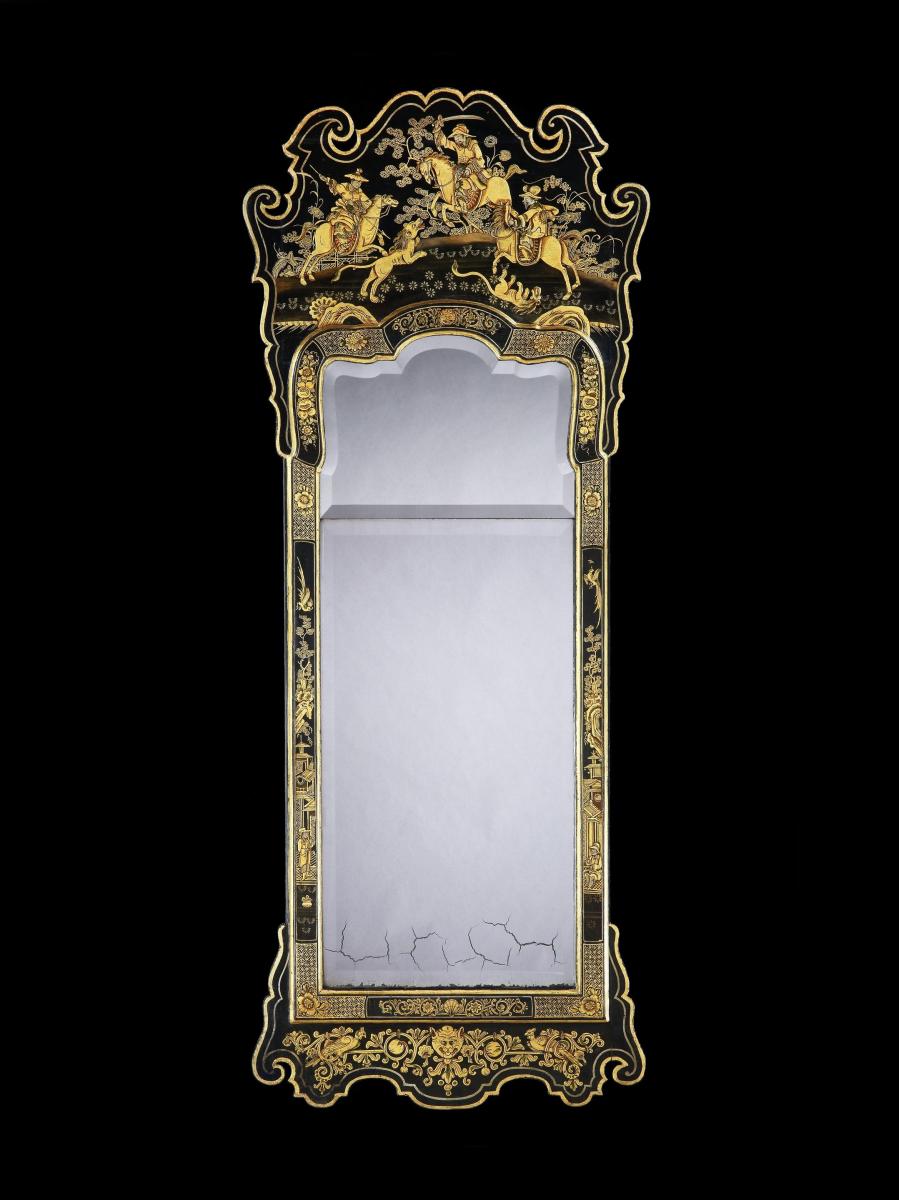
Price on application
This object is eligible for a Certificate of BADA Provenance
The BADA Standard
- Since 1918, BADA has been the leading association for the antiques and fine art trade
- Members are elected for their knowledge, integrity and quality of stock
- Our clients are protected by BADA’s code of conduct
- Our dealers’ membership is reviewed and renewed annually
- Bada.org is a non-profit site: clients deal directly with members and they pay no hidden fees
Giles Grendey: A George II Green Japanned Pier Mirror.
England, circa 1730.
An exceptionally rare large George II green japanned pier mirror attributed to Giles Grendey. The beveled mirror plates in two parts surrounded by a magnificently decorated shaped frame profusely decorated throughout with golden chinoiseries on a deep green japanned ground, the top cresting depicting a figural scene with men on horseback.
The chinoiserie decoration of outstanding quality.
In July 1596, Elizabeth I invited the emperor of China to establish trade with England. The establishment of the East India Company a few short years later in 1599 helped to formally open trade routes with the East and introduced the European courts to the wonders of Chinese art and design.
One of the most highly prized exports from the East was lacquerware. In the form of screens, chests, and cabinets, lacquer was coveted for its brilliant lustrous surfaces and exotic decoration.
Lacquer began to appear in the finest English country estates in the early 17th century. In the inventory of Hatfield House in 1611, there is mention of ‘One China table of black gilded and painted’ as well as ‘1 high chaire… the frame guilt China worke.’
By the end of the 17th century, records indicate that a total of approximately 3,500 lacquered pieces per year were brought to England, including cabinets, chairs, mirror frames, tea tables, powder boxes.
The novelty and expense of this type of work sparked a desire to recreate these works in Europe. Ultimately, the Europeans were searching in vain for the recipe to make lacquer as the specific resin required, sap from Rhus vernicifera, a tree found across China but not in Europe, was not available.
Instead, the Europeans developed a technique to layer a series of paints and varnishes onto a surface, which created a similar appearance to lacquer when applied in a certain way.
The English referred to their imitations of Asian lacquer as Japan work. John Stalker and George Parker’s 1688 publication, A Treatise on Japanning and Varnishing, was one of the most influential treatises on japanned furniture and decoration in England.
Early examples of japanned work can be seen at Ham House, with a 1683 inventory recording a pair of ‘black stoles.’ Some of the greatest cabinetmakers of the time were known to deal in japanned furniture.
James Moore, royal cabinetmaker to George I, is recorded in 1700-01 as supplying furniture to Anne, Duchess of Buccleuch including ‘a Buro made of Japan & Locks… 2 flowerd Japan Cabinetts & frames with Locks & Hinges.’
The most celebrated cabinetmaker associated with this japanned furniture is Giles Grendey, Grendey’s most famous commission is the celebrated Lazcano Palace suite, consisting of at least seventy seven pieces of scarlet japanned furniture including chairs, bureaus, tables, candle stands, and daybeds.
This mirror, with its exceptional surface quality and chinoiserie decoration, bears resemblance to the japanned pieces from Grendey’s workshop.
Dimensions
Height: 153.00cm (60.24 inches), Width: 64.00cm (25.20 inches)Stock number
M06.47The BADA Standard
- Since 1918, BADA has been the leading association for the antiques and fine art trade
- Members are elected for their knowledge, integrity and quality of stock
- Our clients are protected by BADA’s code of conduct
- Our dealers’ membership is reviewed and renewed annually
- Bada.org is a non-profit site: clients deal directly with members and they pay no hidden fees


